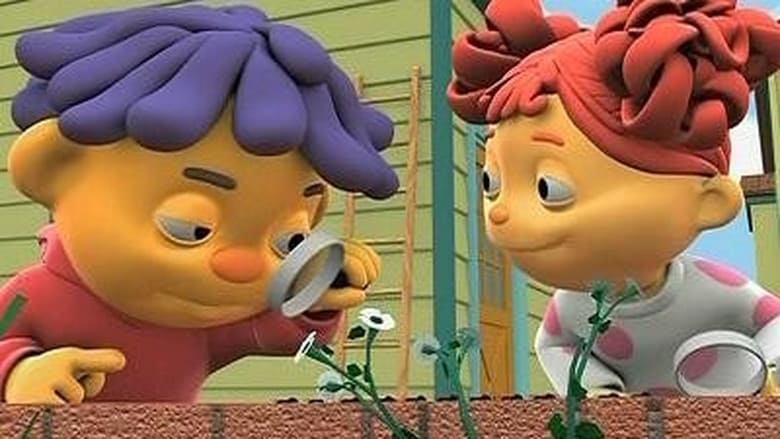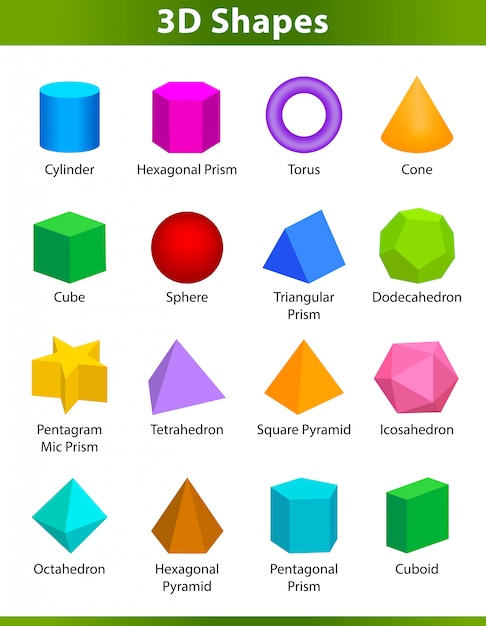Little bear feel better
Little Bear - Feel Better, Little Bear DVD (2003) - Nickelodeon
Feel Better Little Bear
62 ratings
Out of Print: Future availability is unknown
Notify Me When Available
Add to Wishlist
Format: DVD
item number: W6K8
| Free shipping on most orders of $75+ | Brand New | 30-day returns |
Related products:
Little Bear - Rainy Day Tales for $8.30
Little Bear - Little Bear's Band for $8.30
91% recommend us!
15,781 Customer Reviews
Join our 135,000 fans
DVD Features:
- Rated: Not Rated
- Closed captioning available
- Run Time: 1 hours, 42 minutes
- Video: Color
- Released: October 7, 2003
- Originally Released: 2003
- Label: Nickelodeon
- Encoding: Region 1 (USA & Canada)
- Packaging: Keep Case - Checkpoint
- Aspect Ratio: Full Frame - 1.
33
- Audio:
- Dolby Digital Stereo - English
- Additional Release Material:
- Featurette:
- "What Will Little Bear Wear"
- "Hide and Seek"
- "Little Bear Goes to the Moon"
- "Gone Fishing"
- "Under the Covers"
- "The Campfire Tale"
- "Up All Night"
- "Night of the Full Moon"
- OOBI--THE FRIEND WHO'S ALWAYS WITH YOU
- Interactive Menus
- Scene Access
- Interactive Games: Little Bear's "Between Friends" Poetry Game
Performers, Cast and Crew:
| Story by | Maurice Sendak |
Entertainment Reviews:
Product Description:
Maurice Sendak's beloved children's book character Little Bear comes alive in Nickelodeon's popular animated television series. In this 4-episode volume, Little Bear battles the mumps, a cold, the flu, and a tummyache but finds that friends and family are always the best medicine. Includes "Between Friends," "Pillow Hill," "Little Bear's Sweet Tooth," and "A Flu." The DVD edition features 8 bonus episodes from the MEET LITTLE BEAR and GOODNIGHT LITTLE BEAR videos.
Includes "Between Friends," "Pillow Hill," "Little Bear's Sweet Tooth," and "A Flu." The DVD edition features 8 bonus episodes from the MEET LITTLE BEAR and GOODNIGHT LITTLE BEAR videos.
Keywords:
Series | Children | Bears | Cable TV / Cable TV Shows | Television Shows | Television / TV Series
Product Info
- UPC: 097368753822
- Shipping Weight: 0.25/lbs (approx)
- International Shipping: 1 item
How to Order
Shipping Rates & Options
International Shipping
Return Policy
Request a FREE Catalog
Order Items by Catalog
View Catalogs Online
Safe Shopping Guarantee
Buy a Gift Certificate
About OLDIES.com
Customer Reviews
Contact Info
Privacy Policy
Send Feedback
Forgot Password?
Sign Out
Email Subscriptions
Redeem Gift Certificate
To place an order or for customer service, call toll-free 1-800-336-4627 or outside the United States, call 1-610-649-7565
Open Monday-Friday: 9am-9pm, Weekends: 11am-7pm (Eastern Time)
Se habla Español! Spanish-speaking representatives available, Monday-Friday: 9am-5pm (Eastern Time)
Portions of this page © 2022 TiVo Corporation. For personal non-commercial use only. All rights reserved.
For personal non-commercial use only. All rights reserved.
© 2022 OLDIES.com and its affiliates and partner companies. All rights reserved.
Little Bear in Winter • Sunlit Summit
Little Bear Peak…even the name sounds like something best viewed from a distance. Often listed as one of the hardest 14ers, we all know that the Bear really isn’t very Little.
Bears are almost always brown or black, like the rocky slopes of the Peak in summer. A very small percentage of black bears have a rare gene making them white; these are often called “spirit bears” due to their rarity and importance in indigenous cultures. In the winter, snow transforms Little Bear Peak into a white spirit bear. Like sighting the rare white bruin of the northern forests, a snowy winter ascent of Little Bear Peak is a special occurrence, entailing extra hardship and perhaps a little luck.
In the early days of January, I climbed Blanca and Ellingwood in a solo winter day trip. Views on that day made the “spirit bear” ascent of Little Bear look daunting.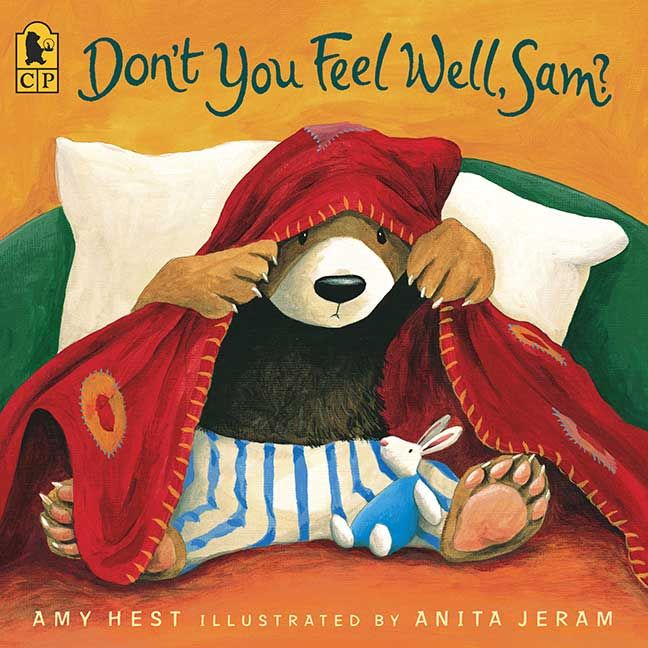
I’ve been talking about climbing Little Bear Peak in winter since December of 2016, but the opportunity never presented itself. Either the weather was bad, I didn’t have the right partner, or I was just plain intimidated by climbing that peak in winter.
Flash forward to January 2018, I’m driving down La Veta Pass, thinking about everything that could go wrong, with Little Bear illuminated by the moon and looking like a ghost to the north. Looking like a ghost. Ghosts are white, at least that’s how they draw them. White. White means snow. Maybe too much snow. There’s probably no way I’ll make it, especially solo. In winter. What am I even thinking? Well, there’s a great forecast, and I’ve been talking about Little Bear for over a year, so I might as well try it.
In the wise words of the late, great Jim DiNapoli (Dancesatmoonrise), “the night before a solo winter climb is always the toughest.” The darkness makes everything more ominous, I’m already tired from a hard week of high school, and my confidence about making the summit is at an all-time low. But, I guess I might as well try.
But, I guess I might as well try.
“Well, you cannot win if you do not play. No, you cannot win if you do not play.” ~ Steve Forbert
We park the RV at about 7.9k on the Lake Como Road. The alarm goes off at 3:30 a.m. and I leave the warmth of the RV soon after, immediately hopping a barbed-wire fence and heading southeast across BLM land towards Little Bear’s southwest ridge. The Tobin Creek trailhead is on private property, so the only access to this side of Little Bear is with a long bushwhack.
I hate walking solo in the dark below treeline. It’s not so much that I’m worried about animals or even scared at all; it’s just a feeling of mind-numbing boredom and a suffocating sense of wanting to be anywhere else. I want to be either in the RV, warm and secure, or well above treeline, triumphantly approaching a summit. The complete lack of any path makes it worse. Low, nasty scrub pine trees gradually condense into a forest that catches my snowshoes and ice axe and offers no opportunity for marking my progress except by comparing the tracks on the GPS. I become my own absurd little universe, confined to the headlamp beam and the GPS. As far as I can tell, I might be the only human alive, maybe even the only animal. I have to remind myself that solo mountaineering is not a good time for existential crises–just keep bushwhacking. Maybe the sun will come up someday.
I become my own absurd little universe, confined to the headlamp beam and the GPS. As far as I can tell, I might be the only human alive, maybe even the only animal. I have to remind myself that solo mountaineering is not a good time for existential crises–just keep bushwhacking. Maybe the sun will come up someday.
Eventually I make it to Tobin Creek, where I cross and begin ascending steeply through the desert scrub towards treeline. The wind begins to pick up as I reach the crest of the southwest ridge around 10.5k, and I begin to fight snow-covered talus as well as the trees. As the sky becomes gradually lighter, I turn off my headlamp, navigating in the soft pink glow of a winter dawn. Now it is a desperate struggle to get to treeline before sunrise. Somehow my days always seem better when they start with sunrise in the alpine.
First light on the southwest ridgeI push through several short but deep drifts without donning snowshoes to avoid wasting time by stopping. I end up stashing the snowshoes at treeline, grateful not to have needed them. Sunrise reveals that I have already climbed high above the beautiful but barren expanse of the San Luis Valley. It’s starting to get windy, and it’s an icy wind. Mountain Forecast is calling for a wind chill in the negatives; the traverse will probably be too dangerous in these conditions. I am proud of myself for at least getting out and trying.
I end up stashing the snowshoes at treeline, grateful not to have needed them. Sunrise reveals that I have already climbed high above the beautiful but barren expanse of the San Luis Valley. It’s starting to get windy, and it’s an icy wind. Mountain Forecast is calling for a wind chill in the negatives; the traverse will probably be too dangerous in these conditions. I am proud of myself for at least getting out and trying.
Of course I don’t turn around yet. The ridge is still broad and composed of talus and snow–any wind gusts are not yet dangerous. I crest a bump around 12.8k and begin to feel better about the endeavor as I see that Little Bear’s west face looks fairly dry. From Point 13,133 the ridge becomes narrower with some exposure to the left and a steep slope to the right. I trade my trekking poles for an ice axe for increased security on the steep slopes.
Southwest ridge around 13.2kIt’s a long way down to the valley
As I gain elevation above 13k, the ridge steepens dramatically, culminating in a rather exposed 4th-class knife edge and a short vertical face. The wind has dropped considerably, it’s perfectly clear, I’m warm and feeling strong, and the rock is fairly dry. I inch my way cautiously into the beginning of the technical section. If there’s one terrifying yet exhilarating aspect of solo mountaineering, it’s the necessity of self-reliance. No partner to help keep an eye on the weather, no one to remind you to stop for water, no one to point out a better route. Climbing solo demands pure focus on each move while still necessitating a high level of broader situational awareness. In this sense, perhaps going solo in alpine style is the purest way to climb.
The wind has dropped considerably, it’s perfectly clear, I’m warm and feeling strong, and the rock is fairly dry. I inch my way cautiously into the beginning of the technical section. If there’s one terrifying yet exhilarating aspect of solo mountaineering, it’s the necessity of self-reliance. No partner to help keep an eye on the weather, no one to remind you to stop for water, no one to point out a better route. Climbing solo demands pure focus on each move while still necessitating a high level of broader situational awareness. In this sense, perhaps going solo in alpine style is the purest way to climb.
It’s just the rock, the snow, the wind, the sun, and me, almost 6,000 feet above the valley floor.
The bear rears its headThe knife edge (taken on descent)
After a few minutes of concentrating on scrambling, the ridge broadens and flattens, and I reach the summit of South Little Bear, an unofficial 14er, just before 10 a.m. The relatively large summit provides a welcome break, where I drink a few cups of tea and study the final part of the route. The Mama Bear Traverse, as it is popularly called, threads ledges and ridge sections to gain only 17 vertical feet to the true summit of Little Bear Peak. It looks quite doable and even drier than I had hoped. For the first time, I feel that I have a good chance of making the summit. Of course, there’s also the descent. What if the wind picks up? Would reversing the knife edge be doable in a big wind? What if it was gusty at just the wrong time? What if… Sometimes, I decide, it is best not to consider too many possibilities.
The Mama Bear Traverse, as it is popularly called, threads ledges and ridge sections to gain only 17 vertical feet to the true summit of Little Bear Peak. It looks quite doable and even drier than I had hoped. For the first time, I feel that I have a good chance of making the summit. Of course, there’s also the descent. What if the wind picks up? Would reversing the knife edge be doable in a big wind? What if it was gusty at just the wrong time? What if… Sometimes, I decide, it is best not to consider too many possibilities.
The views from up here are simply surreal, with all 4 ranked 14ers of the Sierra Blanca clearly in sight. (from left to right: Little Bear (close), Ellingwood, Blanca, Lindsey)
Summit pano from South Little BearI carefully descend the 3rd-class northwest face of South Little Bear a few dozen feet to bypass the first obstacle on the ridge, a huge overhanging gendarme. The target is a ledge that cuts an improbably line around the gendarme to regain the ridge a little later. The wind calms down further, and I carefully walk along the ledge. I have crampons in my pack but decide not to use them because the rock is fairly dry for winter and there are plenty of solid hand holds. It’s important to be absolutely sure about every move, as there are no second chances up here.
The wind calms down further, and I carefully walk along the ledge. I have crampons in my pack but decide not to use them because the rock is fairly dry for winter and there are plenty of solid hand holds. It’s important to be absolutely sure about every move, as there are no second chances up here.
“Do or do not; there is no try.” ~ Yoda
Gendarme blocks passageScrambling below the crest
The ledge is about 2 feet wide and flat. To my right, a wall of rock rises to the impassable ridge crest. To my left, Little Bear’s west face drops precipitously almost 2,000 feet into the headwaters of Tobin Creek. I feel a little like I am playing a game of pool against a man with no teeth, betting money I don’t have. That is to say, focused.
Exposure on the ledgeThe ledge broadens and turns into a slope leading back to the sharp crest. In places, it’s most secure to scoot along sitting down. The exposure to the left is still significant, but the drop to the right into Blanca Basin is jaw-dropping. Snow kicked off here might not hit the ground for 800 to 1,000 feet.
Snow kicked off here might not hit the ground for 800 to 1,000 feet.
Exposure into Blanca Basin
In some places, the ridge is perfectly flat and capped by a snow ridge; I must be careful to not touch any cornices and to maintain several points of contact, even when no rock is sticking out. In other places, sharp rock fins jut up, and I pass these only after testing that the rock is solid.
On the Mama Bear TraverseBefore long, I am looking down into the technical crux, a 20-foot, 4th-class downclimb into the notch at the top of the infamous Hourglass Couoir. The snow complicates things, and I use the ice axe for dry-tooling in snowy cracks to help lower myself on the face. The exposure is actually not too bad for the short crux. After the downclimb, I ascend a relatively snowy and loose face.
Final pitch to the topAnd what’s this? The ridge ends! The summit of the Spirit Bear, aka Little Bear in winter! YES! The traverse took around 35 minutes, putting me on top before 11 a. m. The elation I feel ranks up there with my summits of Orizaba, Gannett, and the Grand Teton. Today my joy is compounded by the isolation, the self-reliance, the dim memory of perseverance while bushwhacking, and the sobering knowledge of the exacting scrambling needing for the imminent descent.
m. The elation I feel ranks up there with my summits of Orizaba, Gannett, and the Grand Teton. Today my joy is compounded by the isolation, the self-reliance, the dim memory of perseverance while bushwhacking, and the sobering knowledge of the exacting scrambling needing for the imminent descent.
The snow-clad flanks of the Sierra Blanca soar all around, giving verity to the sub-range’s name. The San Luis valley stretches out, perfectly flat, to the Culebra Range and the western San Juans; to the north, the Crestones form a jagged profile against the azure sky. I sip some tea.
This is why I climb. I climb to experience the senses, the joy and triumph, the pain and boredom, the fear and hope. To rebel against the numbing syndrome of a consumer society that knows neither defeat nor triumph. To escape the “norm” of being neither quite dead nor quite alive. To be alive.
“I would rather be ashes than dust!
I would rather that my spark should burn out in a brilliant blaze than it should be stifled by dry-rot.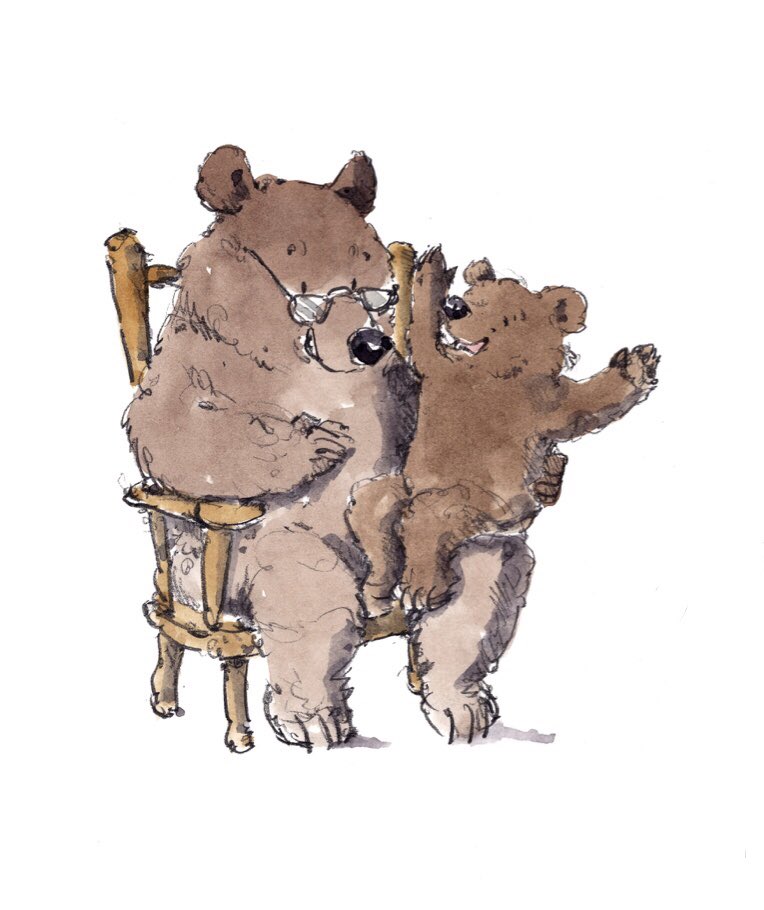
I would rather be a superb meteor, every atom of me in magnificent glow, than a sleepy and permanent planet.
The function of man is to live, not to exist.
I shall not waste my days trying to prolong them.
I shall use my time.” ~ Jack London
Summit pano from Little Bear
I relax on the summit probably longer than I should, but I need some time to come to terms with having summited Little Bear solo in winter under perfect weather. The whole thing seems implausible, but here I am on the top. I wonder if I am the youngest person (17) to have done this solo in winter; it doesn’t matter, but would be an interesting claim.
The traverse back to South Little Bear goes fairly smoothly since I am now intimately familiar with the terrain. Climbing up the notch above the hourglass is probably the hardest part in this direction as well, but certainly not the most exposed.
South Little Bear from the traverseTo the west, the steepness of the west face allows for eagle’s eye views of Little Bear Lake / Tobin Creek (left) and Como Lake / Holbrook Creek (right) in beautiful symmetric valleys. These valleys offer an interesting contrast, given that they are almost identical geographically, with Como having a road and trail and thus getting practically all of the human usage with Tobin remaining virtually unvisited.
These valleys offer an interesting contrast, given that they are almost identical geographically, with Como having a road and trail and thus getting practically all of the human usage with Tobin remaining virtually unvisited.
Shortly, I regain the top of South Little Bear and proceed to descend the last few sections of scrambling. Fortuitously, the wind remains practically calm as I retrace my route down the short face and across the knife edge.
The scrambling below South Little BearFrom here, the full lower route is in view, undulating down to treeline and cutting across the terrible scrub forest to the Lake Como Road. I am grateful for safe passage back to the safety of the talus on the lower ridge, and I try to maintain a decent pace so that I hopefully don’t have to do too much bushwhacking after sunset. As if aware that I am practically out of danger, the wind resumes its gusty force.
The lower southwest ridgeThe early afternoon light illuminates the awesome west face of Little Bear. I climbed the right-hand ridge and traversed across the top of the face to the summit, which is on the left.
I climbed the right-hand ridge and traversed across the top of the face to the summit, which is on the left.
Below 13k, I begin to slow down, struggling to fight the wind and loose talus. There is a certain relief that accompanies returning towards treeline, as it seems to alleviate the need to move quickly. Still, I try to push myself to make it out by sunset.
As I descend, the last of the nearby snowy peaks disappear behind the lower ridges, but the Culebra Range still stands out on the horizon.
The 13er Twin PeaksBushwhacking with a view of the Culebra Range
I end up finding a very heavily used deer trail that provides an easier path through much of the bushwhacking. Still, the deer are lower than me, so I continually have to duck under branches to avoid catching the snowshoes and ice axe. As the trees thin, the sun sinks behind the San Juans, lighting up the desert in amber waves of natural grain. I reach the RV shortly after sunset, making for a round-trip time of just over 14 hours.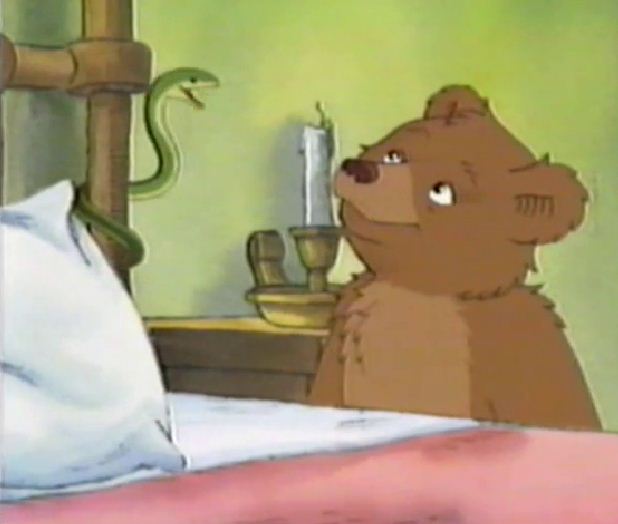
I am thankful to be able to experience this creation, to be fully alive, even if for only a moment. I hope you enjoyed the story of my dance with the “spirit bear.”
“Wake up to find out that you are the eyes of the world.” ~ Grateful Dead
Goodnight, Little BearGISMETEO: Polar bear transported to Moscow feels better - Animals
GISMETEO: Polar bear transported to Moscow feels better - Animals | Weather news.Switch to mobile version
- Animals
In the beginning of September in the village of Dikson, Krasnoyarsk Territory, a polar bear was again in trouble. The animal frightened a local resident, who fired a gun at the bear, injuring him. Shortly after the incident, the animal was taken to Moscow, where it turned out to be a young female bear at the age of three, and during the examination, she was found to have about 30 wounds from buckshot and many other injuries, including paralysis of the hind legs.
Nevertheless, Svetlana Akulova, general director of the Moscow Zoo, said in a post on her telegram channel that the health of the injured animal is changing for the better, and in the morning the bear looked “peppy”. She noticed that the animal had a good appetite, and his breathing, in turn, was stable and calm.
According to Akulova, the she-bear was happy with the water hose, took a bath and looked happy, but there are no changes in the state of the animal's paws yet, she was also given painkillers and antibiotics. She added that the look of the animal shows that he wants to live, and the zoo staff will do everything possible for this.
More interesting things in Telegram Read us on Zen
See also
Why are modern insects so much smaller than prehistoric ones?
In ancient times, many insects and arthropods were much larger.
Larry the Cat approved the appointment of Rishi Sunak as Prime Minister and expressed his hope to improve his menu
Global warming causes narwhals to change their migration schedule
A close-up portrait of an ant caught people's attention online
A huge amount of fishing line ends up in the sea every year
Dramatic video: a bear attacked a climber in Japan
An owl stole a toy horse stick and flew around like a witch on a broom
The photos quickly went viral on a number of platforms.
How does the rescued polar bear Dixon feel? | Q&A
Vitaly Krasnov
Estimated reading time: 3 minutes
1320
Category: Archive
Experts spoke about the condition of the polar bear, which was found on September 3 in Dixon with gunshot wounds. Recall that he was transported first to Norilsk, and then to Moscow, now he is in the zoo.
Recall that he was transported first to Norilsk, and then to Moscow, now he is in the zoo.
Dixon's polar bear is gradually improving, but he still cannot move with his hind legs. Now he needs rest and calmness, ahead of him are new examinations that will help doctors understand the reason for the failure of the hind legs and choose the most appropriate method of treatment.
“He needs to gain strength to undergo more detailed examinations. We understand that he himself will not be able to get into the tomograph and, moreover, behave calmly. He will have to be immobilized once again, that is, given potent drugs. And in order for him to endure them calmly, the bear must at least rest a little and gain strength, ”says Andrey Gorban, , director of the Roev Ruchey Flora and Fauna Park, .
Andrei Veniaminovich noted that doctors do not yet know the exact cause of the failure of the hind legs. So far, the best option for the animal is to simply have a spinal cord injury, which can be cured with medication and simple operations. If the spinal cord is not damaged, then the bear has a great chance of recovery.
If the spinal cord is not damaged, then the bear has a great chance of recovery.
“A big plus in this situation is that Dixon's internal organs continue to function. Often in such situations, the kidneys fail and the chance of survival is reduced to zero. But he is very strong, one of those bears that will fight. The most important thing now is that it needs to be examined and prepared for the operation,” the director of the park notes.
Recall that a wounded polar bear was found near residential buildings in the village of Dikson on Taimyr on September 3rd. He was in a critical condition: the lower part of the body was paralyzed, there were cuts on his paws.
Rosprirodnadzor specialists who arrived at the scene found multiple gunshot wounds on the bear. The service issued a permit to capture the predator as quickly as possible and turned to the doctors of the Moscow Zoo for help, who replied that even if there was only one chance in a million, they would try to save the animal.

